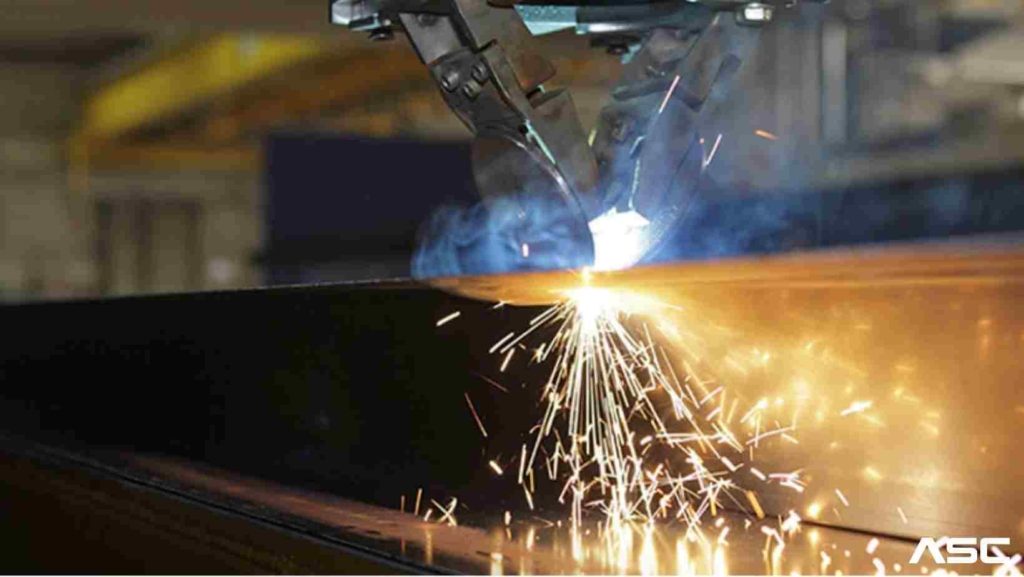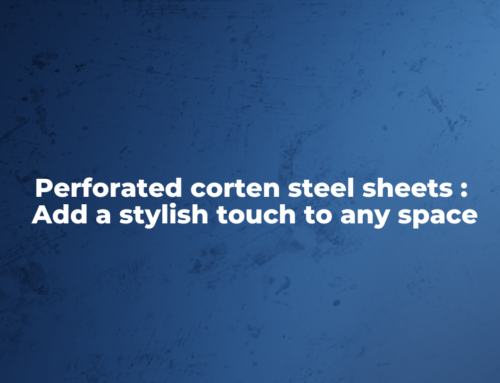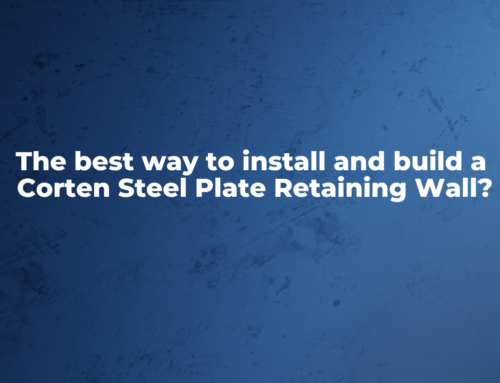Sealing corten steel with polyurethane or a product called Everbrite can enhance its durability. After applying, the finish will be darker than dry rust but will look similar to rust sprayed with water or oil
If you live in a dry climate, a periodic mist of water will accelerate the oxidation process. In a matter of minutes, vinegar will give the planter the rusty look.
Speaking of Corten Steel, specialized Corten Steel is used for proper functioning. Cortensteeltube.com Is one leading Manufacturer, Supplier & Stockist Of Corten Steel ASME SA423 Welded Pipes & Tubes.
Corten steel A shows full strength and stiffness (yield strength, modulus of elasticity) up to 540°C. This limit is set at 425°C for Corten steel B and 400°C for carbon steel. Corten steel is also used for outdoor stoves due to its higher heat-resistant properties.
Physical properties Melting Corten Steel Heat Treatment |
||
| Quantity | Thermal expansion | Melting temperature |
| Value | 10–10 | 1450–1510 |
| Unit | e−6/K | °C |
By heating and cooling steel, phase transformation is used to change the microstructure into a solid state. This results in a wide range of microstructures and properties. In heat treatment, the process is normally thermal and modifies only the structure of the steel. When steel components are thermo-mechanically treated, the shape and structure are also modified. When steel is thermo-chemically processed, its surface chemistry and structure are altered.
Heat treatment processes such as thermo-mechanical and thermo-chemical are also important processing approaches for steel and are being examined in the context of heat treatment. During heat treatment processes, all factors that affect the heating and cooling of the steel must be closely controlled. The atmosphere of the heating furnace also affects the steel’s condition.
The steel is subjected to a definite time-temperature cycle during the heat-treating process. There are three components to this time-temperature cycle, namely (i) heating, (ii) holding at a specific temperature range (soaking), and (iii) cooling. There are certain fundamental objectives in each case, however.
Heat treatment of steel allows for a wide range of microstructures and properties. Phase transformation is used during heating and cooling to transform the microstructure into a solid state. In heat treatment, the processing is normally thermal and changes only the structure of the steel. In the case of the thermo-mechanical treatment process of steels, the shape and structure of the steel components also get changed.
When steel is subjected to a thermo-chemical process, its surface chemistry and structure are modified. For the heat treatment of steel, both thermomechanical and thermochemical treatment methods are important processing approaches, and both are considered in the context of heat treatment. All factors affecting the steel’s heating and cooling must be controlled closely during heat treatment processes. Heat-treated steel’s condition is also affected by the atmosphere in the furnace.
There are several factors that determine a part’s heating rate. These are (i) the heat conductivity of the steel, (ii) its condition, and (iii) the size and cross-section of the steel. The steel’s heat conductivity plays a significant role. Steels with high heat conductivity heat up faster than those with low conductivity.
Unless the steel is in a highly stressed condition caused by severe cold working or prior hardening, the rate of heating is not particularly significant. In such cases, the temperature should be slowed. This is often not possible since furnaces are often operating at operating temperatures, and placing cold steel in a hot furnace can cause distortion or crack.
The steel is subjected to a definite time-temperature cycle during the heat-treating process. There are three components to this time-temperature cycle, namely (i) heating, (ii) holding at a specific temperature range (soaking), and (iii) cooling. There are certain fundamental objectives in each case, however.
There are several factors that determine a part’s heating rate. These are (i) the heat conductivity of the steel, (ii) its condition, and (iii) the size and cross-section of the steel. The steel’s heat conductivity plays a significant role. Steels with high heat conductivity heat up faster than those with low conductivity.
Unless the steel is in a highly stressed condition caused by severe cold working or prior hardening, the rate of heating is not particularly significant. In such cases, the temperature should be slowed. This is often not possible since furnaces are often operating at operating temperatures, and placing cold steel in a hot furnace can cause distortion or crack.
In all of these heat-treating processes, the steel is heated and cooled. However, the temperature and the rate at which the steel is heated and cooled vary, as well as the final results. Heat treatments of steels typically involve the following processes: (i) annealing, (ii) normalizing, (iii) hardening, and (iv) tempering.
Annealing
The process involves heating and cooling steel. The process is often used to soften steel. It also refers to treatments intended to alter the mechanical or physical properties, create a specific microstructure, or remove gases from steel. Various types of annealing processes are described below. The temperature and cooling rate of the operation vary depending on the type of steel being annealed and the purpose of the treatment.
Spheroidizing
In spheroidizing, steel is heated and cooled to form a globular or rounded form of carbide in a ferrite matrix. It is generally carried out by prolonged heating at temperatures just below the A1 temperature but can also be facilitated by alternately heating to temperatures just above the A1 temperature and cooling to temperatures just below the A1 temperature. At the end of the process, however, the temperature must be held just below the critical temperature. After cooling slowly to around 540 deg C, the rate of spheroidization is affected by the initial structure.
Pearlite with a finer grain is more likely to undergo spheroidization. A martensitic structure is extremely receptive to spheroidization. It is typically applied to high-carbon steels (0.60 % carbon and above). By using this method, the steel is made more machinable and is also conditioned for cold-drawing into wire.
Normalizing
In order to achieve any one or more of these objectives, normalized treatment is frequently applied to steel, for example, (i) to refine grain structure, (ii) to obtain uniform structure, (iii) to decrease residual stresses, and (iv) to improve steel machinability.
Hardening
Hardening steel can be accomplished by heating it to a temperature higher than the A3 transformation temperature, holding it for a long enough time to achieve a uniform temperature and solution of carbon in the austenite, and quickly cooling it (quenching). In order to achieve complete hardening, the austenite must be cooled rapidly so that it is not decomposed as it cools through the A1 temperature and is maintained at relatively low temperatures.
Upon cooling below the Ms temperature (around 220 deg C), austenite begins to transform into martensite and fully transforms to martensite below the Mf temperature. In order to avoid distortion and cracking, rapid cooling is only needed to the extent of lowering the steel’s temperature to well below the nose of the S curve. Once this is achieved, slow cooling from then on is beneficial to avoid distortion and cracking.
In order to achieve these conditions, special treatments, such as time quenching and mar-tempering, are applied. Since martensite is quite brittle, steel is rarely used as quenched, without tempering. Carbon content is primarily responsible for the maximum hardness that can be achieved with completely hardened low-alloy steels and plain carbon structural steels.
Tempering
In this process, hardened (martensitic) or normalized steels are reheated to a temperature below the A1 temperature. The rate of cooling does not matter except for steel which can become brittle when heated. As the tempering temperature increases, the hardened steel’s martensite passes through stages of tempered martensite and gradually transforms into a structure consisting of spheroids of cementite in a matrix of ferrite (formerly referred to as sorbitol). Hardness decreases and toughness increases as a result of these changes.
Cortensteeltube.com is a leading supplier, stockist, manufacturer & exporter of Corten Steel. Get in touch with us for the best rates & availability Of Corten Steel ASME SA423 Welded Pipes & Tubes.









Leave A Comment